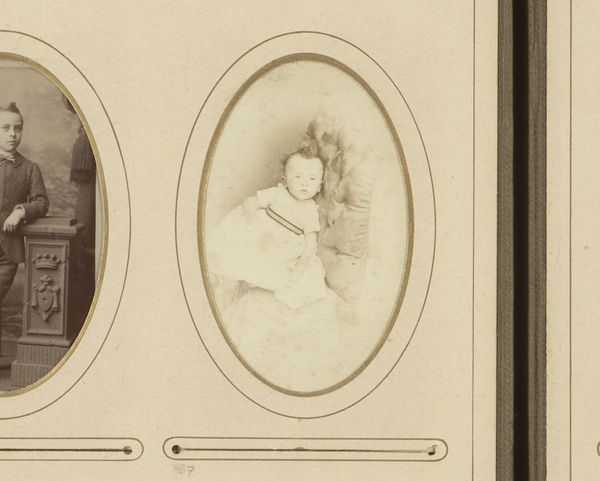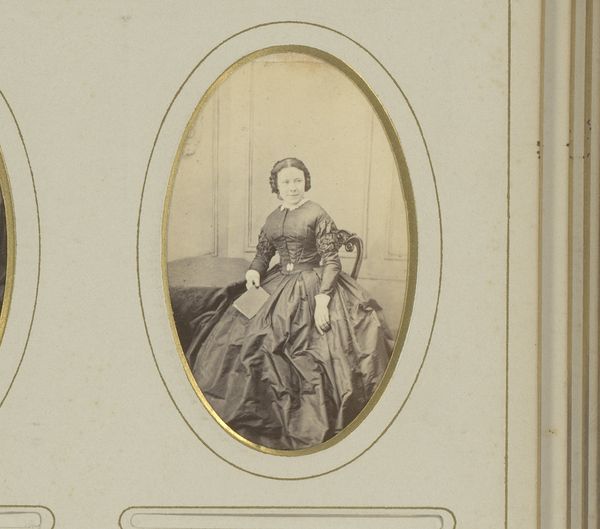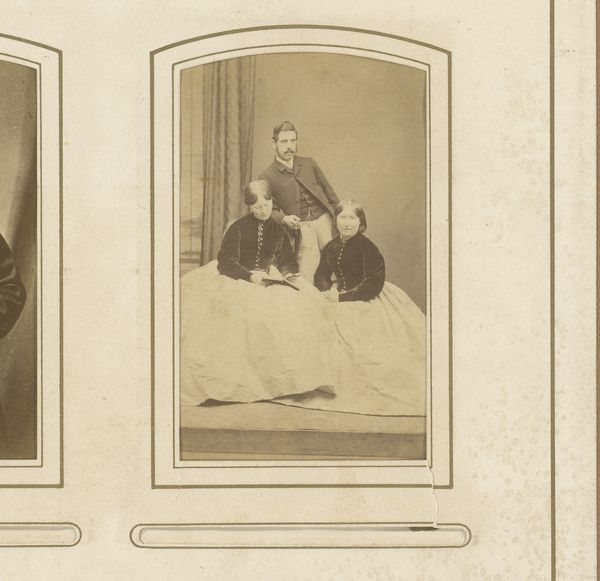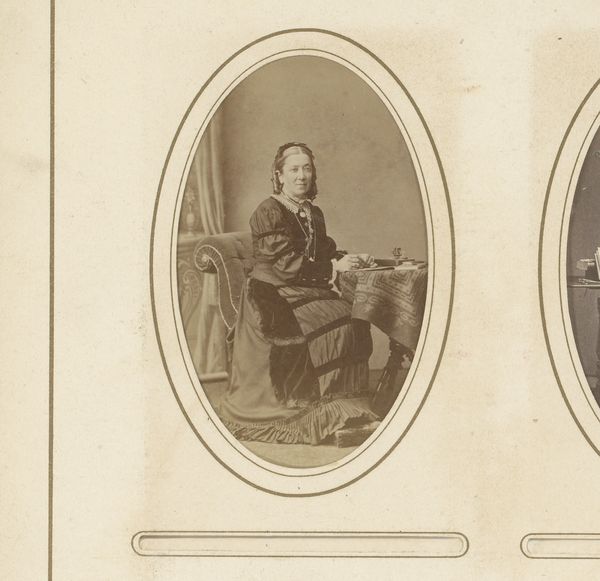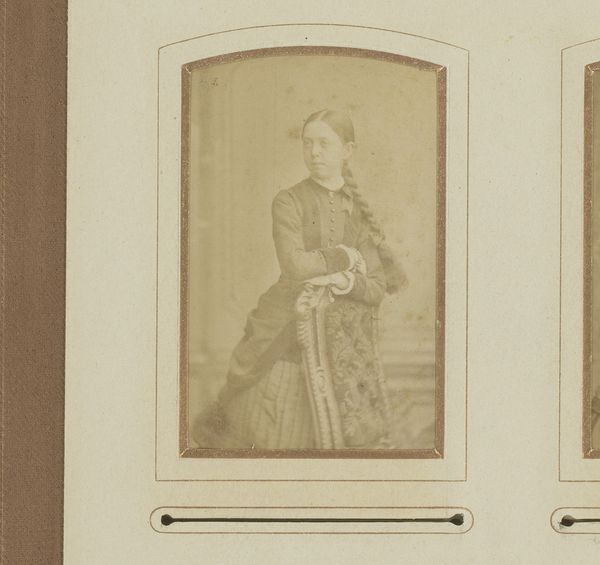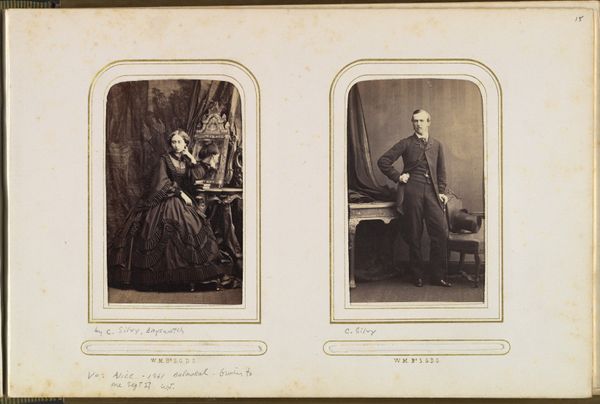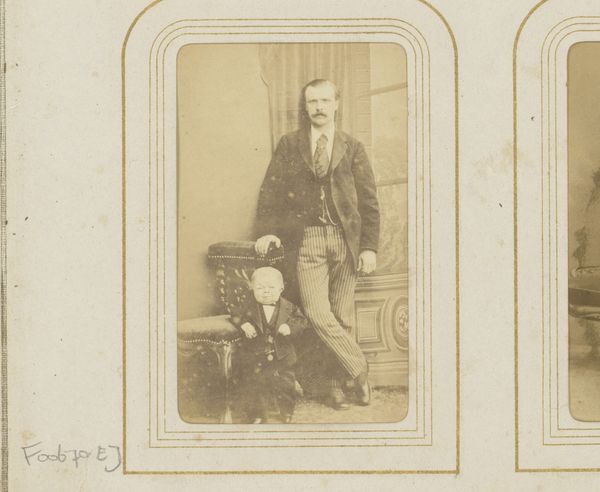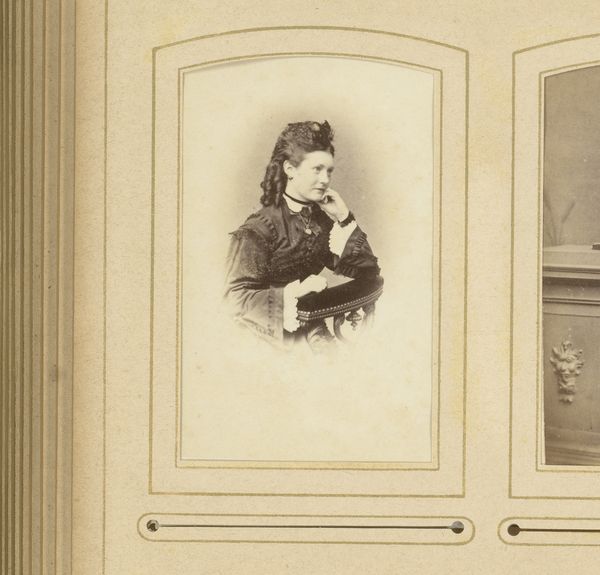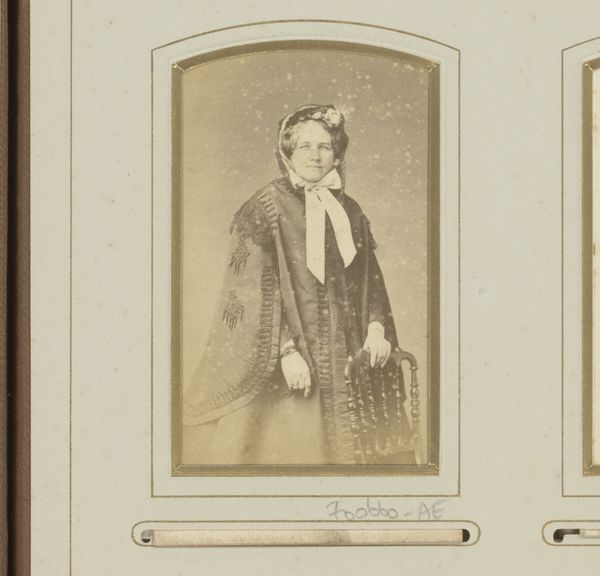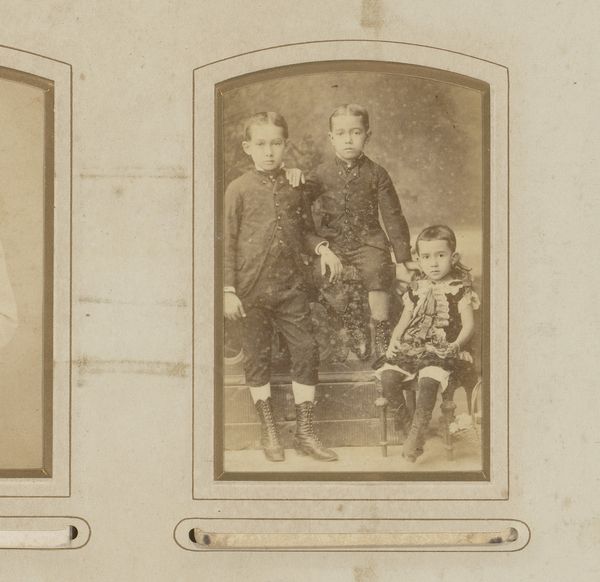
Portret van een man met bakkebaarden en een zittende vrouw 1861 - 1880
0:00
0:00
#
aged paper
#
toned paper
#
photo restoration
#
parchment
#
tea stained
#
archive photography
#
historical photography
#
old-timey
#
yellow element
#
19th century
Dimensions: height 86 mm, width 51 mm
Copyright: Rijks Museum: Open Domain
Curator: Here we have a fascinating photographic print titled "Portret van een man met bakkebaarden en een zittende vrouw," dating from 1861 to 1880, produced by the Parisian School of Photography. Editor: Wow, the amber tones really set a mood, don't they? It’s almost like looking at a memory. I’m immediately drawn in by the contrast between their formality and the aged, almost fragile quality of the photograph itself. Curator: The sitters’ formality certainly speaks volumes about the societal expectations of the period. We should consider how class, gender, and representation intersect here. Her elaborate gown, his tailored suit—these are carefully constructed identities reflecting bourgeois values. Editor: Totally. It feels performative, almost like they’re playing a role. Look at her hands; so poised. And the man’s gaze seems carefully directed, slightly averted perhaps. I wonder what story they were trying to tell the world—and what was going on behind the surface? Curator: The photographer, situated within the Parisian School, was operating in a rapidly changing social and political landscape. Photography itself was becoming more accessible, shaping public perceptions and challenging traditional portraiture. How did the rise of photographic technology impact these sitters’ self-perception and how might they wanted to project that perception to a broader audience? Editor: I think it must have been kind of liberating. Painting was so elitist, reserved to a tiny segment of society; then, suddenly photography shows up, claiming the right to make images accessible to everyone. It's revolutionary! They now can disseminate a stylized, socially elevated version of themselves. Curator: And think about the archival aspects, the "yellow element" and the “aged paper,” as suggested by the AI tags. Those characteristics speak not just to preservation, but to legacy and historical narratives as a whole, don’t they? How does the photo’s degradation influence our viewing experience today, through its digital reproduction in a digital age? Editor: Yes, it's that imperfection, almost like a scratch across time itself. It adds such poignancy. Curator: It's remarkable how a single image can trigger such varied questions about identity, social context, and the very nature of representation. Editor: Absolutely. It feels like a window into another world, filtered through the beautiful, haunting imperfections of time.
Comments
No comments
Be the first to comment and join the conversation on the ultimate creative platform.

